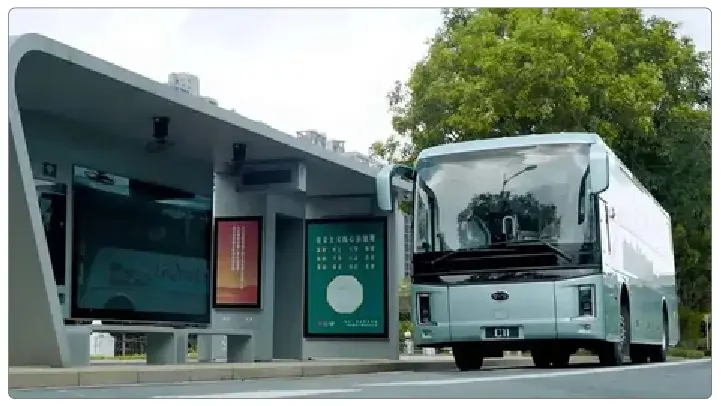BYD Launches Next-Generation e-Bus Platform 3.0 with Advanced Safety and High-Voltage Charging
BYD, the world’s largest electric vehicle manufacturer, has unveiled its groundbreaking e-Bus Platform 3.0. The largest electric vehicle producer in the world, BYD, has also unveiled its innovative e-Bus Platform 3.0, which sets a new standard of safety in the electric bus industry, enhancing both performance and passenger safety. The platform unveils some new technologies, such as a high-speed tire blowout stability system, cell-to-chassis (CTC) battery integration, and adaptive suspension, which are meant to reinvent the way an electric bus operates in real-life, harsh conditions.

The tire blowout stability technology is one of the most amazing highlights of the platform. It has the ability to stabilize the bus within milliseconds of a tire blowout, even at speeds up to 63 mph (100 km/h). This is an exceptionally important safety innovation for large vehicles in the industry, such as buses, where the danger of losing control of the vehicle is particularly high. Due to tire bursts has historically been more of a menace to the passengers and other road users. Another insight that BYD presented is the emergency passenger button, which riders can activate if the driver is incapacitated, allowing them to stop the bus safely.
Cell-to-chassis is also a remarkable feature of the e-Bus Platform 3.0. This structural innovation introduces BYD's new lithium-iron-phosphate (LFP) battery as a structural component of the chassis frame. Although electric passenger cars produced by BYD have yet to reach the U.S. market, electric buses produced by the company have been commonplace for more than 10 years. Since 2013, the company has been running manufacturing plants in California, where it manufactures electric buses and trucks to be used in American cities. This launch is also timely as the world demands safe and efficient, and sustainable systems of public transport. Furthermore, the Blade battery will be integrated into the chassis, thereby offering a sustainable design template, which is in line with the trends in the world in terms of durability, recyclability, and energy saving.